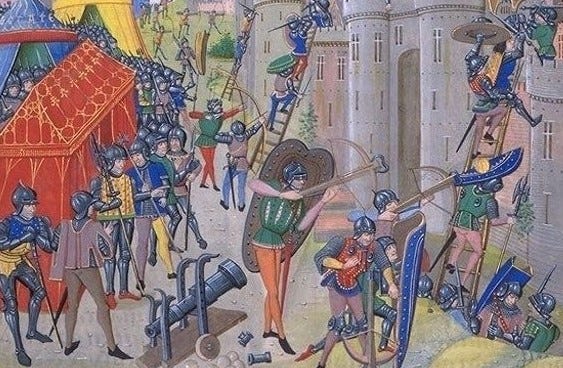Historians are supposed to look for their own niche interest that no one has covered before, or at least not covered in their way. Academics call this sort of opportunity a lacuna. Only after looking through old term papers last fall did I realize that such a lacuna existed on the topic of siege art. Whereas there is plenty of it, and no shortage of it …
Keep reading with a 7-day free trial
Subscribe to Polemology Positions to keep reading this post and get 7 days of free access to the full post archives.




